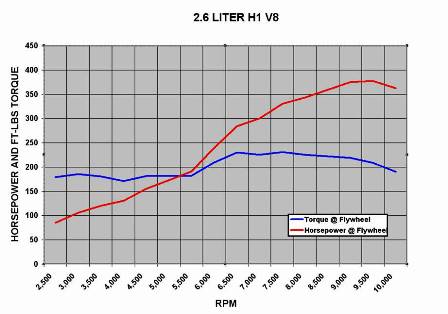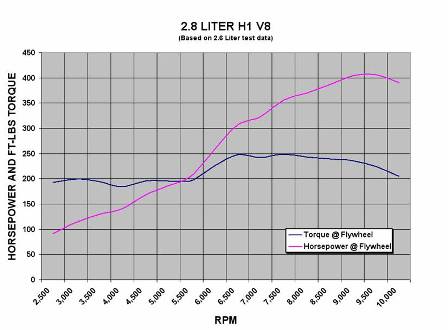Wheel torque and horsepower are converted to flywheel horsepower and torque in the chart to the rights. 19% losses are assumed in the conversion. Note the torque curve is fairly flat showing 180 lb-ft torque as low as 2800 rpm (at the flywheel).
Extrapolating, the 2.8 liter version with 7.7% more displacement and higher compression ratio of 12.5:1 will be bit better than 400 hp.
See the video on the December dyno run on the Dyno Video page.


Link to Dyno Video page...
or Return Home...
|